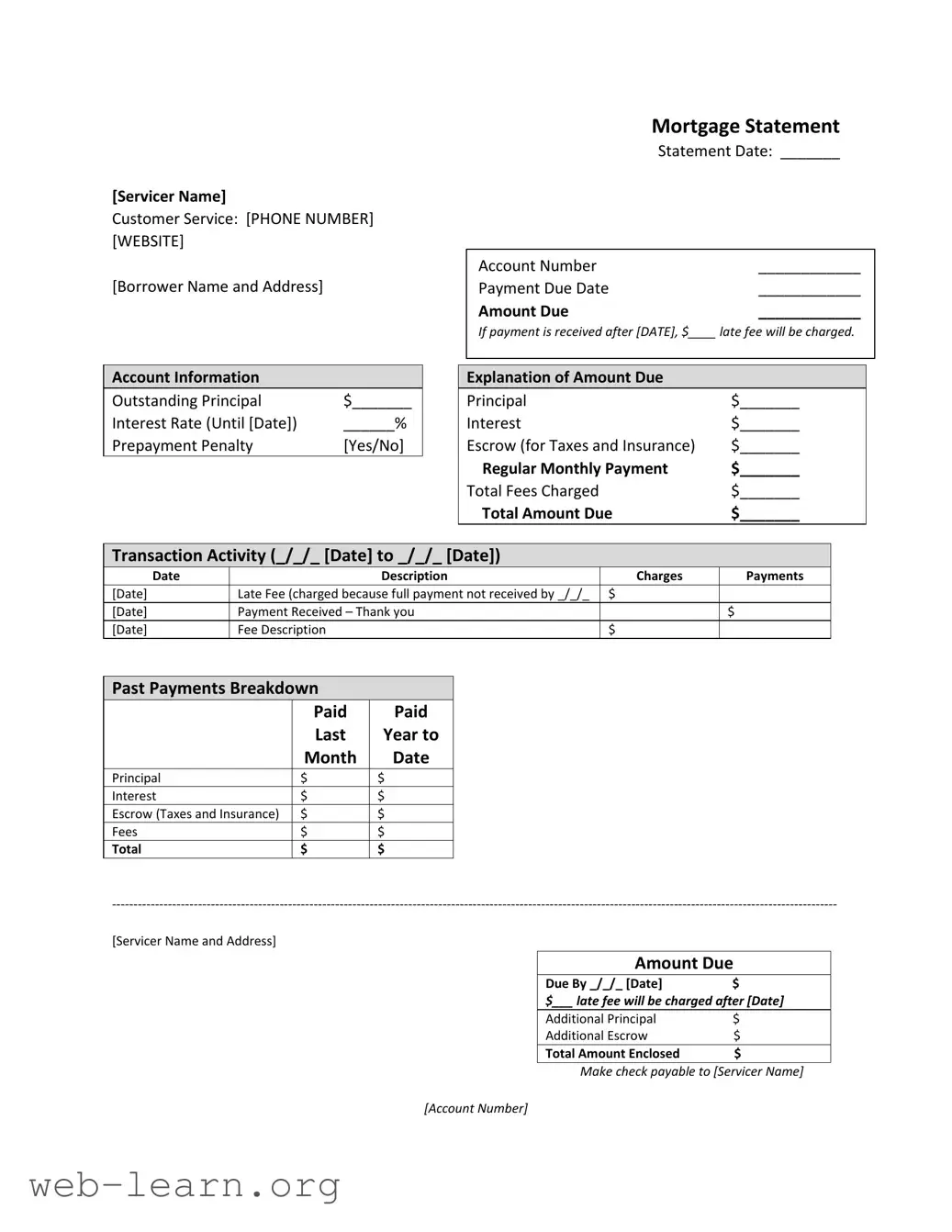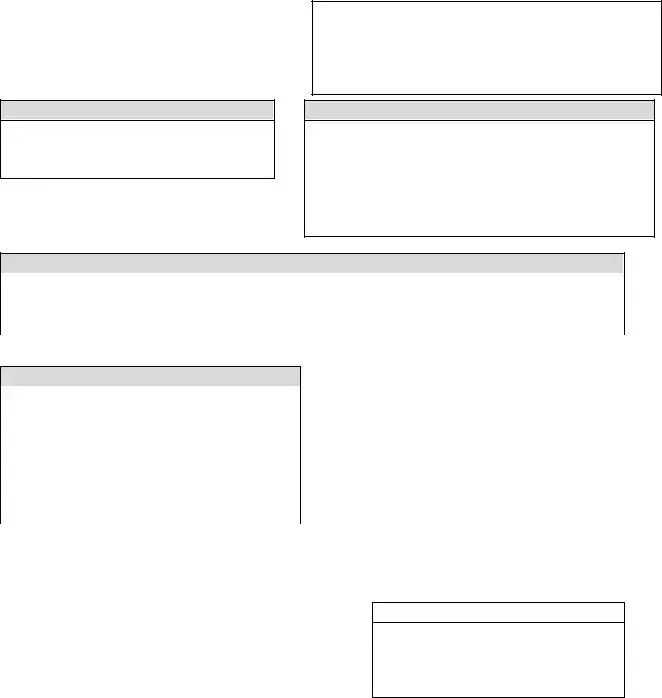[Servicer Name]
Customer Service: [PHONE NUMBER] [WEBSITE]
[Borrower Name and Address]
Mortgage Statement
Statement Date: _______
Account Number |
____________ |
Payment Due Date |
____________ |
Amount Due |
____________ |
If payment is received after [DATE], $____ late fee will be charged.
Account Information
Outstanding Principal |
$_______ |
Interest Rate (Until [Date]) |
______% |
Prepayment Penalty |
[Yes/No] |
Explanation of Amount Due
Principal |
$_______ |
Interest |
$_______ |
Escrow (for Taxes and Insurance) |
$_______ |
Regular Monthly Payment |
$_______ |
Total Fees Charged |
$_______ |
Total Amount Due |
$_______ |
Transaction Activity (_/_/_ [Date] to _/_/_ [Date])
Date |
Description |
Charges |
Payments |
[Date] |
Late Fee (charged because full payment not received by _/_/_ |
$ |
|
[Date] |
Payment Received – Thank you |
|
$ |
[Date] |
Fee Description |
$ |
|
Past Payments Breakdown
|
Paid |
Paid |
|
Last |
Year to |
|
Month |
Date |
Principal |
$ |
$ |
Interest |
$ |
$ |
Escrow (Taxes and Insurance) |
$ |
$ |
Fees |
$ |
$ |
Total |
$ |
$ |
-------------------------------------------------------------------------------------------------------------------------------------------------------------------------
[Servicer Name and Address]
Amount Due
Due By _/_/_ [Date]$
$___ late fee will be charged after [Date]
Additional Principal |
$ |
Additional Escrow |
$ |
Total Amount Enclosed |
$ |
Make check payable to [Servicer Name]
[Additional tables to be translated]
Important Messages
*Partial Payments: Any partial payments that you make are not applied to your mortgage, but instead are held in a separate suspense account. If you pay the balance of a partial payment, the funds will then be applied to your mortgage.
**Delinquency Notice**
You are late on your mortgage payments. Failure to bring your loan current may result in fees and foreclosure – the loss of your home. As of [Date], you are __ days delinquent on your mortgage loan.
Recent Account History
·Payment due [Date]: Fully paid on time
·Payment due [Date]: Fully paid on [Date]
·Payment due [Date]: Unpaid balance of $________
·Current payment due [Date]: $_______
·Total: $_______ due. You must pay this amount to bring your loan current.
If you are Experiencing Financial Difficulty: See back for information about mortgage counseling or assistance.


